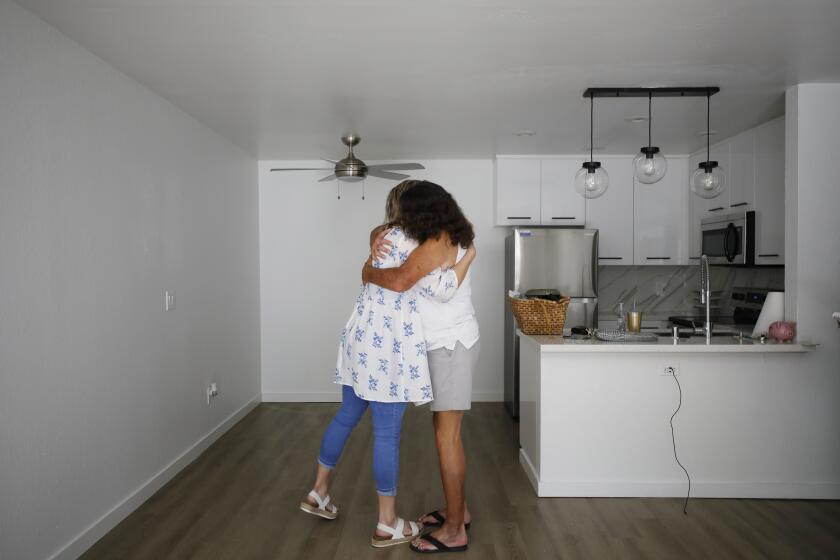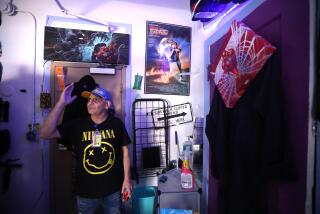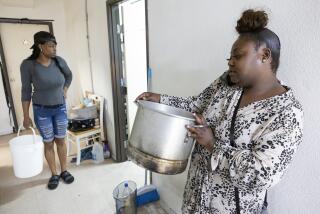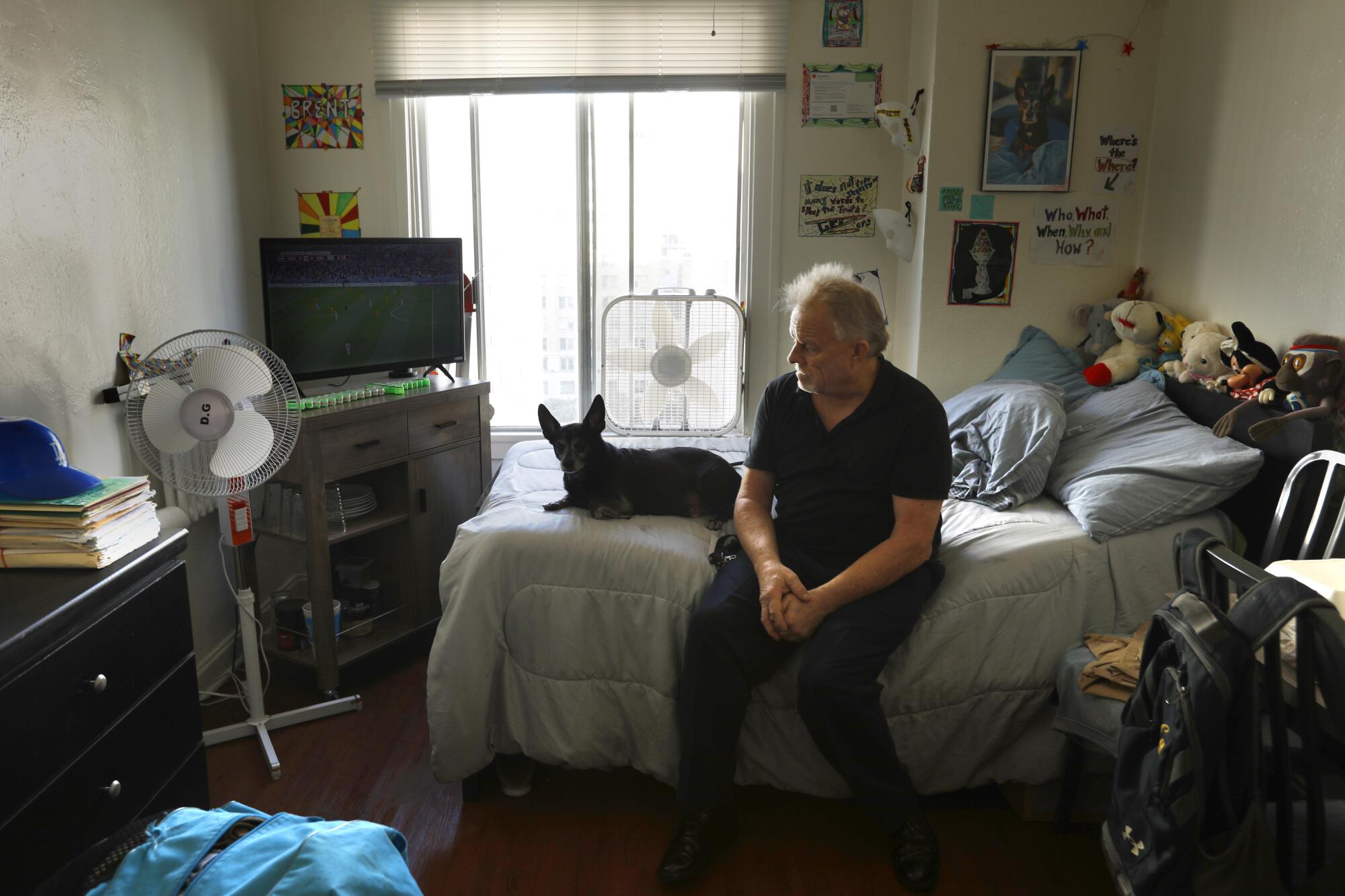
- Share via
It’s not much — a bed with a mattress, a small nightstand, a dresser, a closet and some assorted appliances in a 160-square-foot room.
Some of those rooms have bathrooms, but most don’t. Several floors of the 14-floor building were sweltering over the summer, as residents waited for the air conditioner to turn on. The kitchen is all the way on the bottom floor.
Still, the Cecil Hotel represents an opportunity for its formerly homeless inhabitants to have a room of one’s own — one that comes with 24-hour security and the freedom to come and go without curfews.
The historic hotel, with its haunted reputation and 600 rooms, reopened in December 2021 as a privately funded permanent supportive housing project. With most of the rooms reserved specifically for those in the bottom 30% of the area’s median income, it’s open to any of the thousands of unhoused Angelenos with a government-funded voucher. Many viewed the project as a promising new model in L.A. because of its size and flexibility.

“There aren’t necessarily other projects like this,” said Jet Doye, former chief advancement officer of the Skid Row Housing Trust, which serves as the Cecil’s building manager. In addition to the all-private capital financing, she notes that it’s unusual for a landlord to be willing to accept any tenant-based voucher someone might have.
And yet, a year later, two-thirds of the Cecil remains unoccupied.
Many of the 3,000 people and families in L.A. who have received the emergency vouchers remain in limbo.
At a time when more than 40,000 people are experiencing homelessness in the city, it may seem unfathomable for 400 units to be sitting empty in a building near skid row, the epicenter of L.A.’s homelessness crisis. But even with solid funding and the best of intentions, the Cecil project has struggled to overcome a system beset with a slow-moving bureaucracy and multiple failure points, and to offer housing that serves a population with myriad needs.
A future home
“The confined space kind of bothers me,” Lakeshia Luckey said as she peered into one of the rooms. The 44-year-old has been living in her car for several months after her house was foreclosed on and she lost her job at a care facility.
She feared that the cramped quarters of the apartment wouldn’t be good for her mental health and didn’t want to set herself up for failure. “When I get stable, I don’t want to fall in that space again,” Luckey said.

As they shuffled through the narrow hallways of the 10th floor, prospective tenants had a range of reactions to the Cecil Hotel as a possible future home.
One man, who had been living in one of the tiny home villages in the San Fernando Valley run by Hope of the Valley Rescue Mission, quickly decided on a corner unit that had a shower. “I’m just ready to move,” he said.
“Make sure to write the [room] number if you like it,” said Jose Tovar — residents know him as Pedro — who’s worked at the Cecil for 38 years. He reminded everyone that they could move in that same day if they had a rapid rehousing subsidy. All they needed to do was have their case manager submit a promissory note committing to pay the rent.
While some immediately went downstairs after the tour to submit an application with building manager Raoul Zibi, others went outside and scoffed at the idea of living there.
“Not nearly enough space,” said Christopher Vivier, who was looking for a room with his wife, Victoria. “I personally like our tiny home better than there.”
But the ones who’ve decided to make the Cecil their home have few complaints. So far, nearly a fifth of Cecil’s residents have come from word-of-mouth referrals.
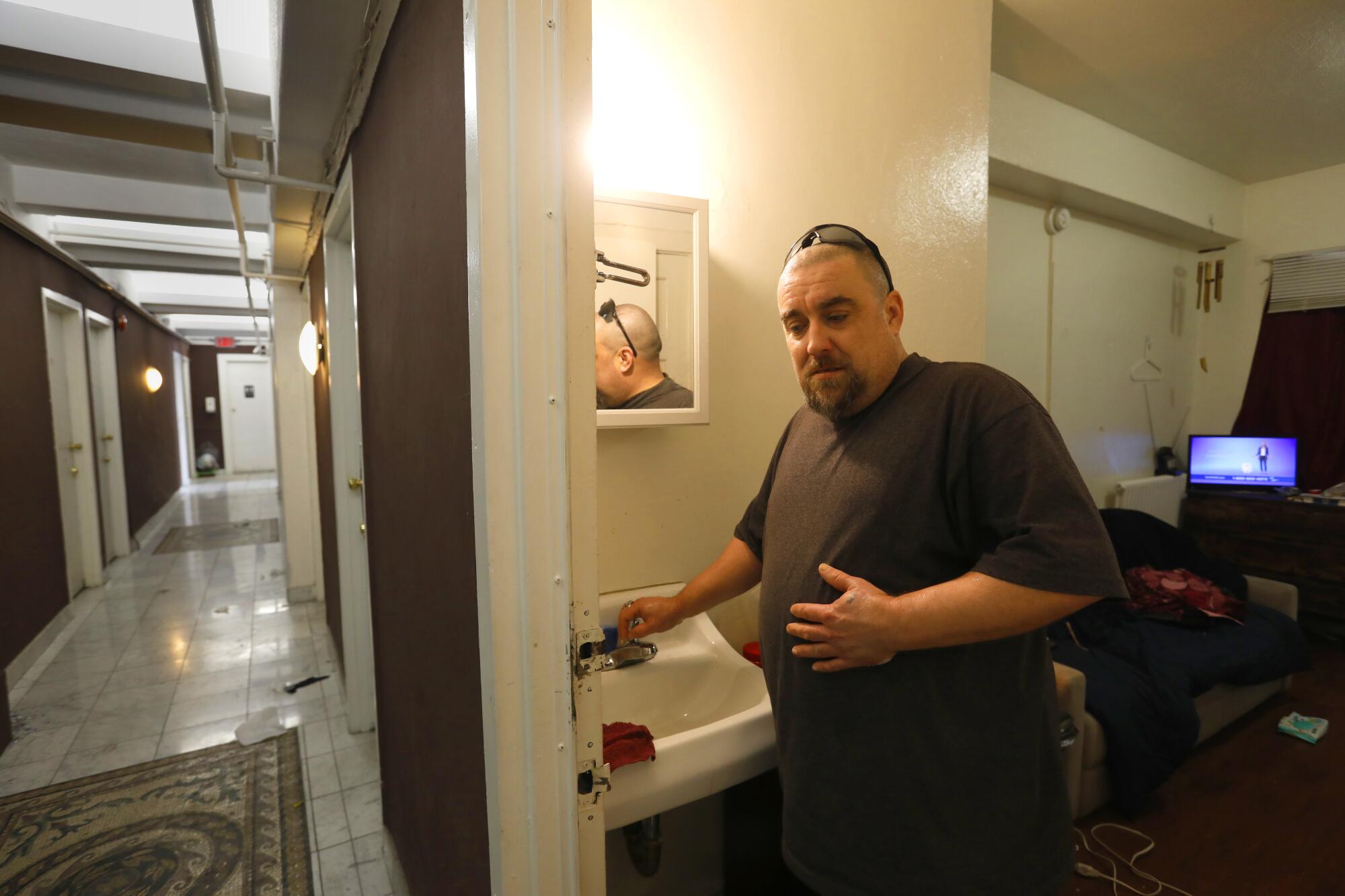
William Moore moved into his room in mid-July from another tiny home village in the San Fernando Valley. He had been there since November 2021 and was previously homeless for about two years.
“It’s really quiet here, no ghosts,” Moore said, laughing, referring to the hotel’s history of mysterious and violent deaths, which became the subject of a 2021 Netflix documentary. He’s quickly settled in and has been working security jobs through referrals.
Moore brought several friends from the tiny home village with him. After one came to check out his place and take a shower, he loved it so much that he moved in right next door to Moore, bringing a couple of other people with him. Moore enjoys the community they’ve built in a short time, sharing food and cooking in the communal kitchen together.
“If I don’t have enough food I go ask him, [we] go back and forth,” Moore said. “We all share here, you know?”
The federal government unveiled a housing voucher program to house the most vulnerable people during the pandemic. This is what happened in San Diego.
A plan spurred by COVID
Simon Baron Development, a New York-based real estate developer, acquired the building in late 2015 through a 99-year ground lease with plans to renovate the structure and turn it into half hotel, half market-rate apartments.
At the time, the firm was working with the Skid Row Housing Trust to make 15% of the apartments affordable for the extremely low-income bracket. While the developer was securing funding for the hotel portion of the plan, however, COVID-19 hit — and “blew up” the financing for the project. The hotel industry was gutted. The developer needed a new business plan.
The housing trust came up with the idea of turning the entire building into affordable housing.
“Clearly Los Angeles, as other major dense, expensive urban areas, has a huge affordability problem and a huge homeless problem,” said Matthew Baron, president of Baron Property Group (now separate from Simon Development). “We figured out a way … we can service that part of the market and become a viable business plan.”
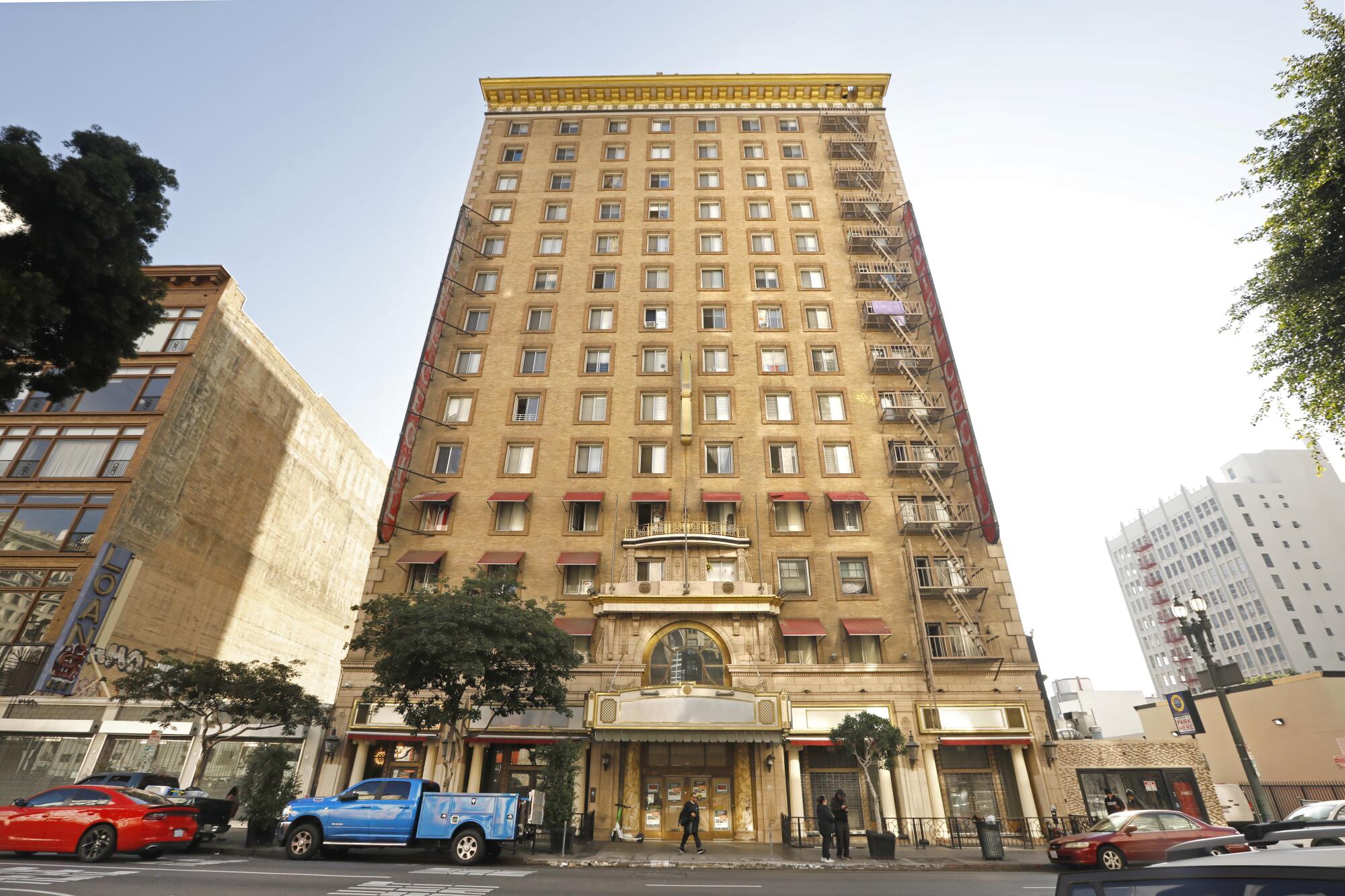
It’s one of the few affordable housing projects in Los Angeles of this size that is fully privately financed. Publicly funded projects often cost more and take longer to construct. For Baron and his investors, the new plan had an upside in that they would be serving tenants in need whose rents would be paid for by the federal government, a guaranteed source of income for the building.
However, Baron said he quickly ran into one of the biggest challenges with the Cecil project: figuring out how to work with the city and various agencies that deal with homelessness and housing.
The building relies on organizations that work directly with the homeless population to fill its units, since all of its residents will rely on vouchers to pay rent. These include groups such as the Downtown Women’s Center, Hilda L. Solis Care First Village, Union Rescue Mission, Hope of the Valley Rescue Mission and others.
Baron also had to work with the Housing Authority of the City of Los Angeles to determine the market rate for a single-room occupancy unit in the area and ran into snags over how to calculate it because of a lack of similar apartments nearby. The housing authority initially offered a monthly rent lower than Baron expected, but eventually settled on $1,242.
By June, after months of renovation, the former hotel was nearly finished, with people slowly trickling in through its doors.
“The table has sort of been set,” Baron said at the time. “Now we just need to bring people to the dinner, so to speak.”
Frustrations build
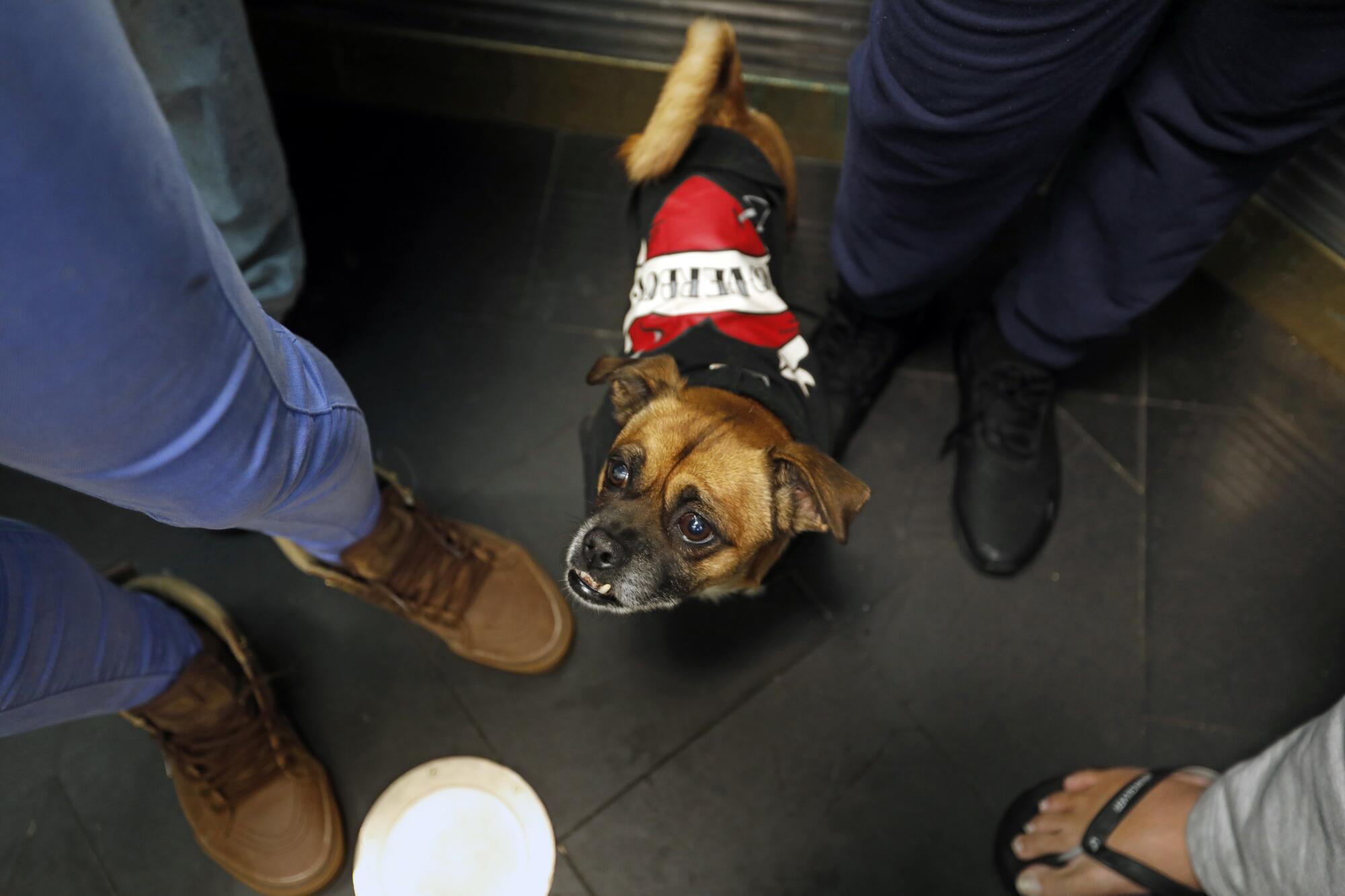
In July, the AIDS Healthcare Foundation ran a full-page ad in the Los Angeles Times addressing the issue of vacant single-room-occupancy units in L.A. while thousands of unhoused Angelenos waited in the streets — and it put the Cecil Hotel front and center.
“Fill the Cecil now!” the ad said.
Susie Shannon, policy director for the Housing Is a Human Right division of the foundation, said they wanted to draw attention to empty properties such as the Cecil Hotel, Hotel Clark and Embassy Hotel, among others.
“When you look at the Cecil, there’s 601 rooms and it’s been vacant for years,” Shannon said. “They literally have homeless encampments in the shadows of these vacant buildings.”
Cecil’s developers, however, called the attack misinformed.
Baron said the hotel has been plagued by delays since it opened due to a surge in COVID-19 cases in early 2022, the lengthy process of getting rooms and rents certified by the housing authority, and finishing renovations on a majority of the hotel’s rooms. Only 20% of the units were completed when the Cecil had its ribbon-cutting in December 2021.
On top of those issues, the Cecil, Baron added, also is reliant on the city’s agencies and nonprofit partners for sending resident referrals, as well as for completing the paperwork and various approval processes that allow the people to move in.
“What interest would a greedy real estate developer possibly have in allowing his building to remain empty and not collecting rents?” said Doye of the Skid Row Housing Trust.
Even before the hotel opened, Baron’s firm spent $25 million on renovations. The total cost of the project has topped $80 million, which translates to slightly less than $140,000 a unit, Baron said.
“We’re paying payroll for a full staff. We’re paying, you know, water and sewer bills. We’re paying electricity, we’re paying insurance, all the things that you have to pay for to run a building,” Baron said. “Why in God’s name would we want to keep this building empty?”
The housing authority’s Section 8 director, Carlos VanNatter, offered one explanation for why he thinks the Cecil has been slow to fill: He believes that people aren’t interested in rooms that lack a bathroom and kitchen. Single-room occupancy units, or SROs, can be a hard sell in the affordable housing market because of their small size, high density and shared facilities, confirms Yasmin Tong of CTY Housing, an affordable housing consulting firm.
Government vouchers give the unhoused up to a year to look for housing suitable for their needs, thus many may be keeping the Cecil as a last resort, VanNatter said.
Even if VanNatter is right about the Cecil not being the first choice among some prospective tenants, it doesn’t fully explain why hundreds of rooms have no occupants.
A complicated, slow-moving system
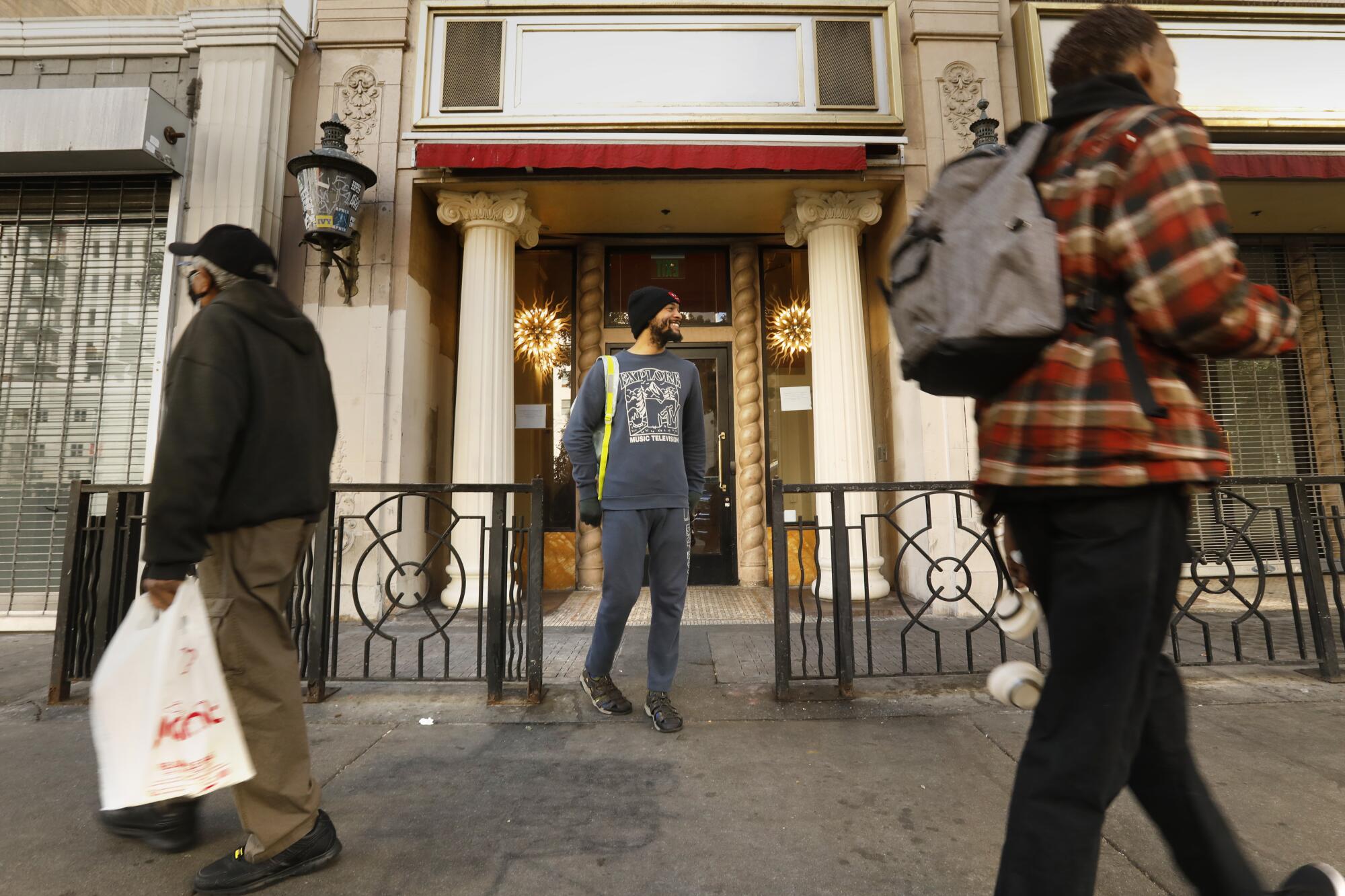
Despite how eager the owners of the Cecil are to fill the building, the problems in L.A.’s homeless housing system run deep and are often out of the control of any one actor.
In July 2021, the U.S. Department of Housing and Urban Development awarded 70,000 Emergency Housing Vouchers to housing authorities across the U.S., including 3,365 vouchers to Los Angeles and a couple thousand more to L.A. County. This means there are more than 7,000 voucher holders looking for housing in the L.A. region during a time of historically low vacancy rates.
The effort is part of the American Rescue Plan Act signed by President Biden in an attempt to help those most vulnerable in society as COVID-19 exacerbated their economic struggles. The housing subsidies are a part of the federal Section 8 program and geared toward people and families who are homeless, at risk of becoming homeless, recently homeless or fleeing intimate violence, sexual assault, stalking or human trafficking.
In July, The Times reported that, after a year, only 5.8% of vouchers received by the city had been used. As of Dec. 11, that number has grown to 20%. Several unhoused people with vouchers described significant wait times with the housing authority after applying for an apartment, with some never hearing back.
Months later, the Cecil is still encountering the same problem. Zibi, the building manager, says he starts the process by submitting a request for the housing authority to inspect a potential resident’s unit, which often takes weeks to complete even when it’s scheduled to take place within days. Then the housing authority must submit an official rent offer before the tenant can sign the lease.
Voucher holders are waiting two to five months to get the necessary approvals from the housing authority to move in after applying to live at the Cecil, Zibi said.
“We are not aware of any EHV holders waiting as long as five months to get their rent offers,” the housing authority’s VanNatter said when asked about the reports of long wait times, though he later noted that the Emergency Housing Voucher office has been grappling with a staffing shortage and a large number of submissions.
Given the delays with the voucher system, local service providers are utilizing preexisting rapid rehousing subsidies to get clients into housing. Intended as short-term rental assistance and distributed by the county through nonprofit partners, the subsidies are aimed at getting the neediest people off the streets as quickly as possible and giving them as long as two years to find a long-term funding solution or become self-sufficient. The eligibility rules are more limited than they are with vouchers, however, and recipients must already be in the system and working with a case manager.
Several case managers interviewed for this article reported no delays in helping clients eligible for a rapid rehousing subsidy move in as soon as they decide they want to live at the Cecil. About 50% of the Cecil’s residents have been able to move in right away with the help of the subsidies, Zibi said.
“It’s been real, real smooth and real easy to get the clients in there,” said Cindy Vigil, a housing navigator for Hope of the Valley Rescue Mission.
Melony Bohler, one of the first people to live at the Cecil since it reopened, moved in with relative ease due to the rapid rehousing dollars. With help from the Downtown Women’s Center, the 63-year-old applied for an apartment on Dec. 1, 2021, and was approved nine days later.
“He answered my prayers,” Bohler said of her new home at the time. “God answered all my prayers.”
There were still things she struggled with, however. Mobility issues made doing laundry or using the kitchen difficult; for months, she slept on a bare mattress, unable to make her bed. She didn’t have the equipment or a pot to make much food in her room, so her diet consisted mostly of tea, hot cocoa, sliced bread, and TV dinners she could warm in her microwave.
When she had her Emergency Housing Voucher application approved, she moved in October to senior citizen housing more suitable to her needs.
Untangling the red tape
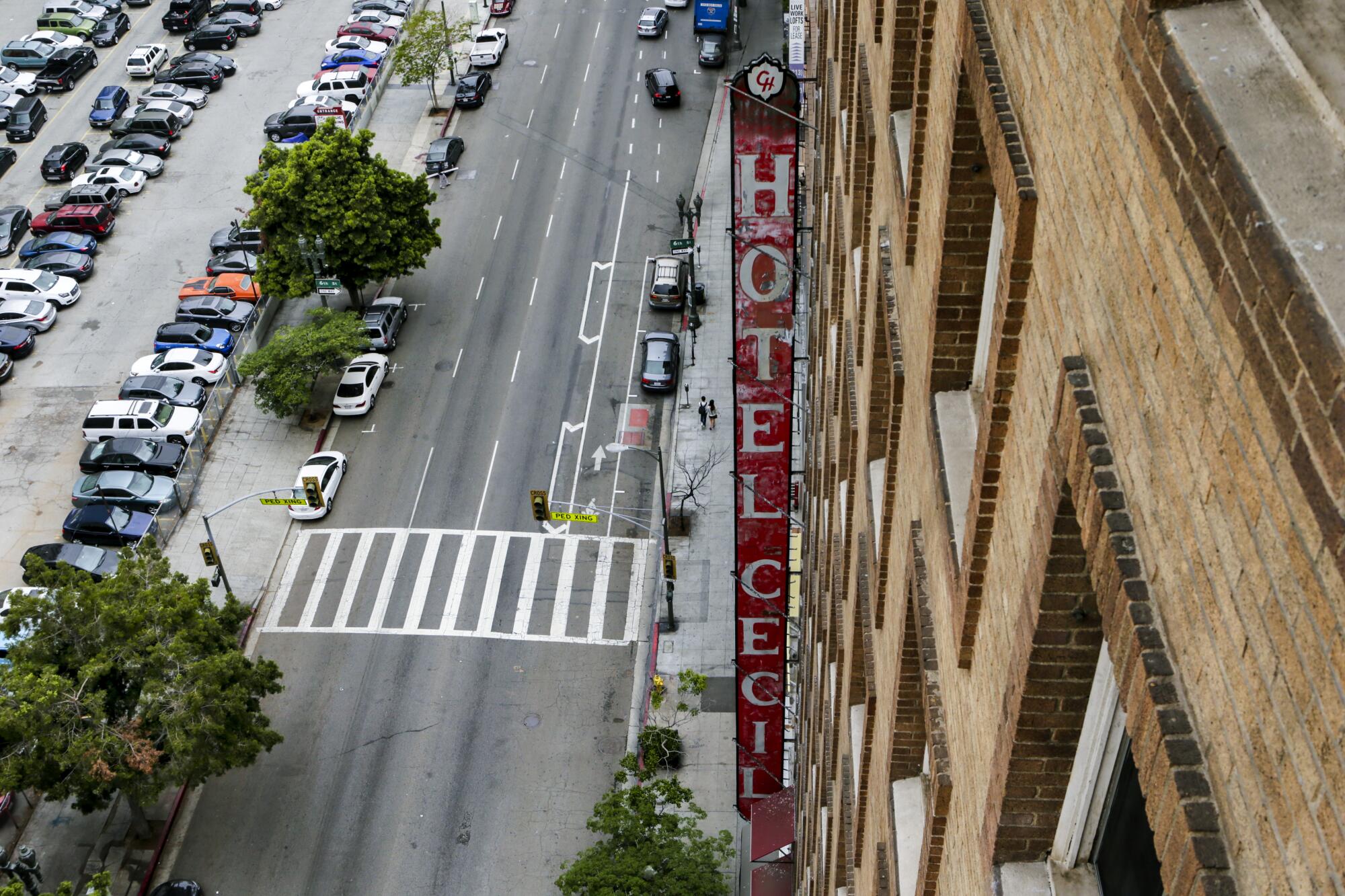
As of the start of December, the Cecil Hotel is home to about 200 residents, with an additional 30 or so rooms reserved for future tenants with pending applications.
The goal is to reach 10 to 15 people moving in per week, but the average is closer to five, Baron said — and he’s frustrated. He can’t fill the building without the help of the city agencies and nonprofit groups involved, and he blames their lack of coordination and cooperation.
“What partnership do we have with the public right now? We’ve got nothing,” Baron said. “We’ve got really minimal help, frankly.”
Mike Neely, a former commissioner of the Los Angeles Homeless Services Authority, said what’s happening with the Cecil is just another example of a broken system bogged down by bureaucracy, even when the housing is available and traditional obstacles to voucher holders, such as unwelcoming landlords, aren’t a factor.
“Here you are with a really innovative and cooperative project between the public sector and the private sector that could work, and all that’s required is cooperation from a city agency to be able to do the job,” Neely said.
L.A. City Councilmembers Kevin de León and Bob Blumenfield proposed a solution July 1 to try to fill the Cecil faster: a master lease agreement with the city of Los Angeles. Under their plan, the city would foot the entire bill for a number of rooms in the building, bypassing the red tape of dealing with federal government-funded vouchers. Outreach workers could offer housing to people on the streets and theoretically move them in on the same day.
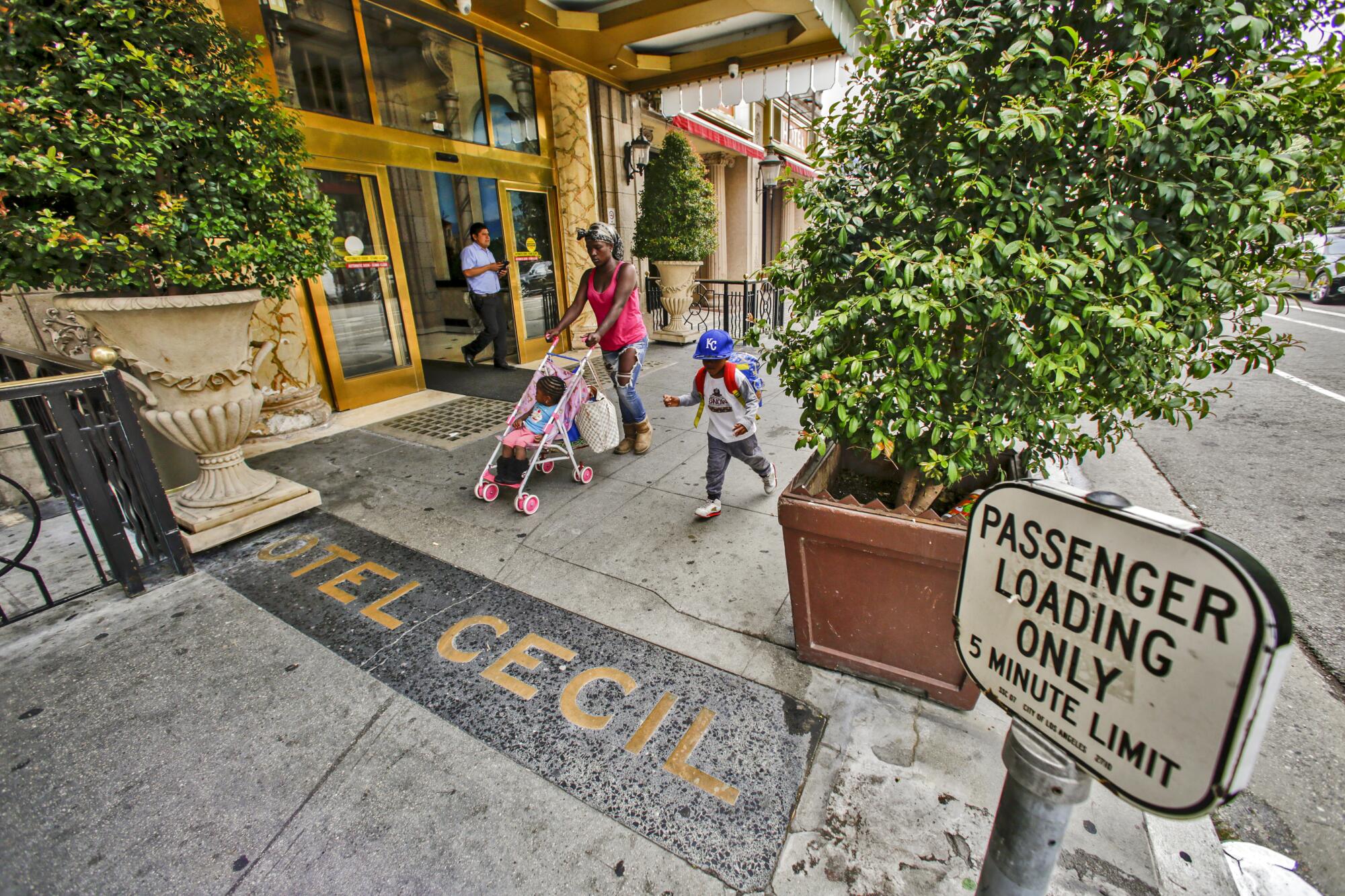
The city’s Homeless and Housing Committee approved a motion to direct staff to look into how such an agreement would work and be funded, and it was passed by the City Council on Aug. 24. There has been no movement on the plan since then, Baron said, noting that the turmoil in the City Council and the recent election certainly didn’t help. (De León, who proposed the motion, has faced a chorus of calls for his resignation after participating in racist remarks made in a leaked audio of L.A. City Council members).
Baron hopes the change in leadership will bring some much-needed urgency to deal with the problems the Cecil faces. “The new administration has reached out to us, whereas frankly the old administration never did,” Baron said.
Meanwhile, the staff at the Cecil is trying to take matters into its own hands. Leslie Morales, the building’s leasing outreach coordinator, hand-delivered hard copies of 20 applications to the housing authority Dec. 1 after electronic submissions of them were met with months of radio silence.
She received seven rent proposals the next day.
“I told them I’ll be there once a week dropping off files,” Morales said.
- Share via
Watch L.A. Times Today at 7 p.m. on Spectrum News 1 on Channel 1 or live stream on the Spectrum News App. Palos Verdes Peninsula and Orange County viewers can watch on Cox Systems on channel 99.
More to Read
Inside the business of entertainment
The Wide Shot brings you news, analysis and insights on everything from streaming wars to production — and what it all means for the future.
You may occasionally receive promotional content from the Los Angeles Times.

